
CREATED IN 1866, EXCELSIOR PARK WAS A MAJOR
COMPANY AND AMONG THE PIONEERS IN THE FIELD
OF STOPWATCHES AND CHRONOGRAPHS.
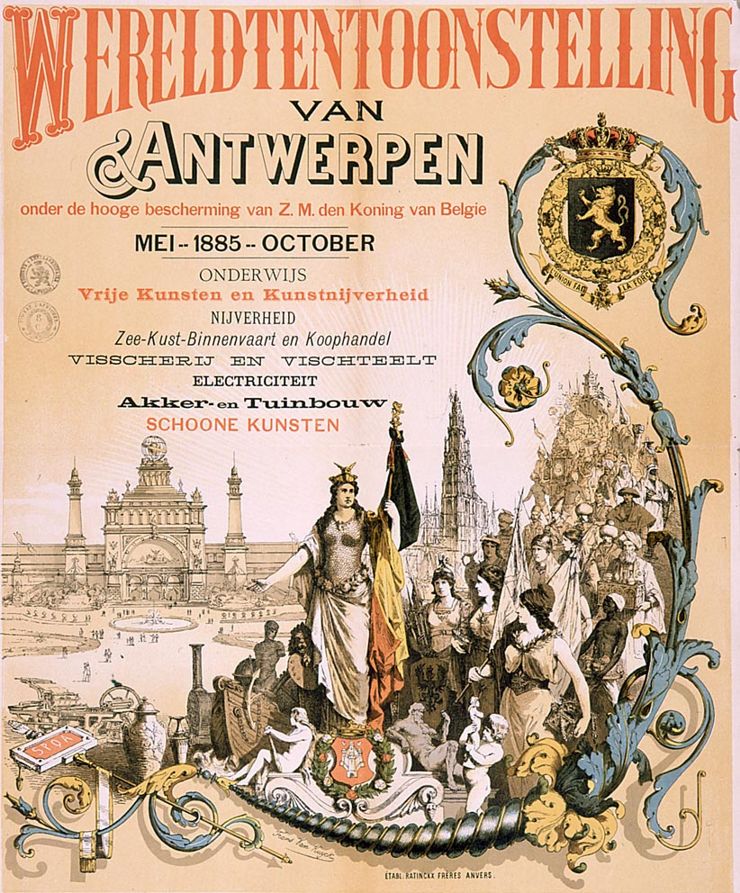
Although there was a confusion about the origin of the brand - as there were two companies, of similar names, Jules-Fred. Jeanneret and Jeanneret and Fils - who asserted the same creation and specialization of the chronographs, it was Jules-Frederic Jeanneret who first set up the business and brought the watch into existence. With a factory on Rue de Tramelan, Jules-Fred. Jeanneret prided itself with innovations. The trademark “Pigeon” was deposited and the company obtained a silver medal at the World Fair of Antwerp in 1885. In 1890, 18 to 20-lines anchor watches and 19-lines chronograph, with or without minutes counters were produced
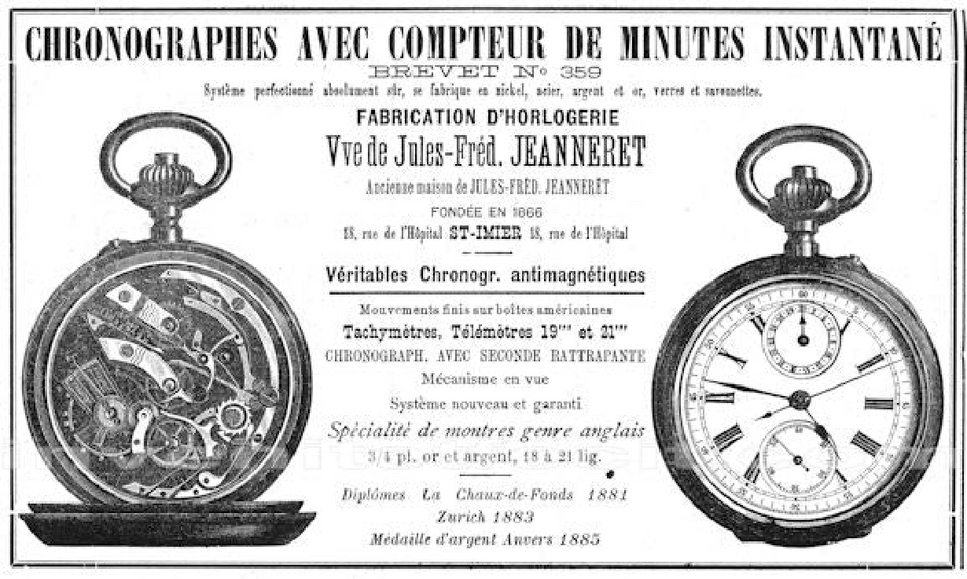
In 1888, Jules-Frédérique's son Albert took over the business. When Jules-Frédérique died in 1890, his wife took over the company which then took the name of Vve de Jules-Fred. Jeanneret which was run by Samuel Jeanneret in 1981. In the meantime, Albert founded Albert Jeanneret & Frères. Antimagnetic chronographs and chronographs with rattrapante or « en vue » mechanisms emerged in the market In 1893, Albert Jeanneret’s sons - Henri and Constant - took over the business and in 1900, the 13-lines chronograph, which is considered the first step toward the wrist chronograph was manufactured. In 1901, the brothers split up.Constant bought the chronograph specialist Leonidas while Henri continued to manage the company, renaming it to Jeanneret-Brehm & Cie
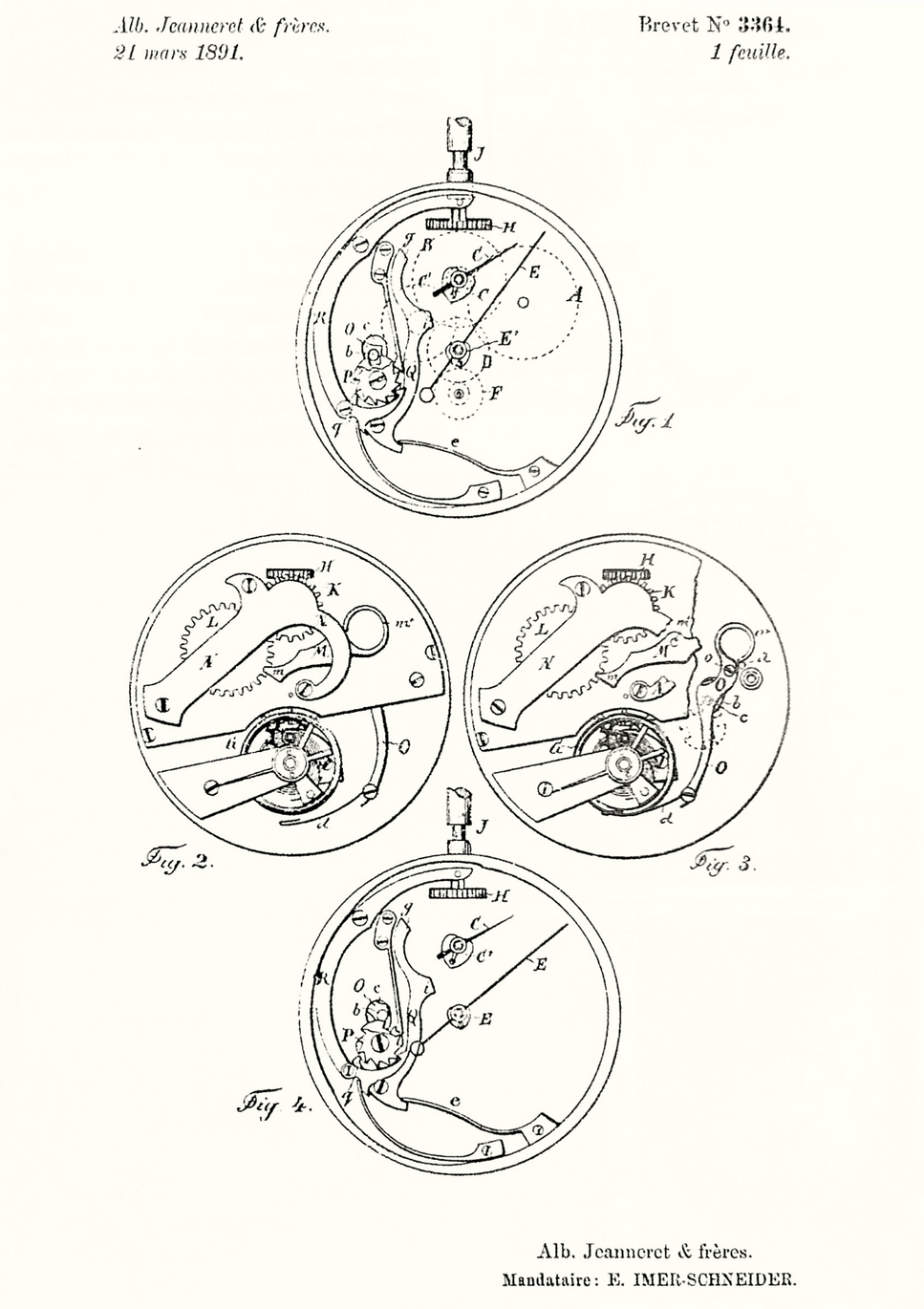
By 1891, they registered the Swiss patent, n° 359 which was deposited on March 18th of 1889. It was invented in collaboration with Alfred Lugrin from L’Orient de l’Orbe, who established one of the most important Swiss movement manufacturers nowadays, the Lémania.
A few years later, in 1893, Albert Jeanneret’s sons - Henri and Constant - took over the business and in 1900, the 13-lines chronograph, which is considered the rst step toward the wrist chronograph was manufactured. In 1901, the brothers split up. Constant bought the chronograph specialist Leonidas while Henri continued to manage the company, renaming it to Jeanneret-Brehm & Cie.
At the same time, the other company, Jeanneret and Fils, had created the Usine du Parc. In 1890, the company was called Alb. Jeanneret et Frères and produces anchor watches from 13 to 24 lines, calendar watches and chronographs under the trademarks Colombe and Diana. The company also asserted a silver medal in Antwerp in 1885. In 1894, Jeanneret Frères produced chronographs under the Colombe trademark and simple watches under the trademarks Diana and Cervin.
A sport stopwatch, patented on March 21th of 1891 by Alb. Jeanneret et Frères, is called “Excelsior”. It shows a bridge in the shape of J on the movement side which will become a trademark for Excelsior Park.

In 1902, the company became Jeanneret-Brehm, Usine du Parc, and produced its first 13-lines chronographs. To supplement the range of watches, the H. Magnenat-Lecoultre factory in the Valley of Joux was purchased in 1911. This factory specialized in repeating watches, with or without chronographs. The company then takes the name of Jeanneret-Brehm and Co and sells its stopwatches under the Excelsior trademark, its chronographs under the Colombe trademark and its repetitions under the trademark Risoud. By the year 1915, the Excelsior trademark was also used for the repeating watches and in 1918, the company became Les Fils de Jeanneret-Brehm, Excelsior Park.
So, the name Excelsior was first used for the chronographs, with the word ‘Park’ added later to appeal to the English speaking market. And in about the year 1918, the Jeanneret-Brehm and Co became Excelsior Park. At the beginning of the 1920s, Excelsior Park will concentrate exclusively on the stopwatches and the chronographs under the helm of Sirs R. - H and ED. Jeanneret. One of them is a graduate of the Technicum of La Chaux-de-Fonds and a sportsman who specializes in timing races. With his innovations in watches, he is often invited to events as an official timekeeper and asked to build apparatuses which do not fail and can be used everywhere. In the same year, In 1921, a patent which involved a bolt placed in the middle, independent of the push-piece starting timing and allowing the stopping of the hand, was filed.

In 1928, Excelsior Park asserted the title as one of the most important Swiss factories for sports stopwatches. The range still increased with stopwatches for canoeing, car sport, decimal timers, others measuring the hundredth of a second with the hand making a turn in one second. One year later, they launched a series of new beautiful chronograph movements of chronographs, from 18 to 22 lines. They comprise supplies of spare parts for repairing.
The great era of short-timers for sporty-minded people began in the 1930s and the company was so successful with this range that it began to develop its own calibres. So, in 1938, the shaped chronograph calibre 12/13 lines intended for the wrist watches was created. A beautiful movement which, with its alternatives, will be manufactured for nearly 40 years.
The successes and numerous honors Excelsior Park acquired did not only testify the brand’s prestige as its self-produced calibers were not only used by themselves. They also supplied chronograph movements for other companies including Gallet, Zenith and Girard Perregaux.
The brand Gallet, which was one of the most prominent users of the Excelsior Park caliber 42 movement, was founded by Julien Gallet. He originated in Geneva but moved to La Chaux-de-Fonds in the 1820s. Gallet manufactured very early wrist-chronographs which carried the Electa brand, managed by his son, Leon. Amanda, Leon’s sister, married Jules Racine who had settled in New York where it represented the Gallet brand. The company Gallet & Co. will not be able to be raised from the difficulties of the First World War and will be liquidated in 1928, but not the American branch which remained active throughout the 20th century.

During the 1930s, Zenith was one of the most important watch manufacturers of Switzerland. It developed a wide range of pocket and wrist watches in traditional forms with ingenious technicalities. Winning accolades for its series of six best pocket and ship’s chronometers. At the contest of the Observatory of Neuchâtel in 1935, Zenith exhibition included a choice of travelling clocks and alarm clocks, electric clocks, as well as a splendid series of « neuchâteloises » clocks. But among all these models, not of chronograph. At this point in time Zenith turns to Excelsior Park and in 1938 launches its rst wrist-chronographs, provided with the caliber EP 42. For almost 30 years. Zenith remained faithful to the Excelsior Park chronographs calibres.graph, with or without minutes counters were produced
On the other hand, Girard-Perregaux was taken over by Mimo in 1930. Mimo did not have chronograph calibre, if one excludes the Stop-in-flight caliber of the Mimolympic model of 1936. It is probably to remain independent of Ebauches SA that the Excelsior Park caliber was selected for the signed chronographs Girard-Perregaux.
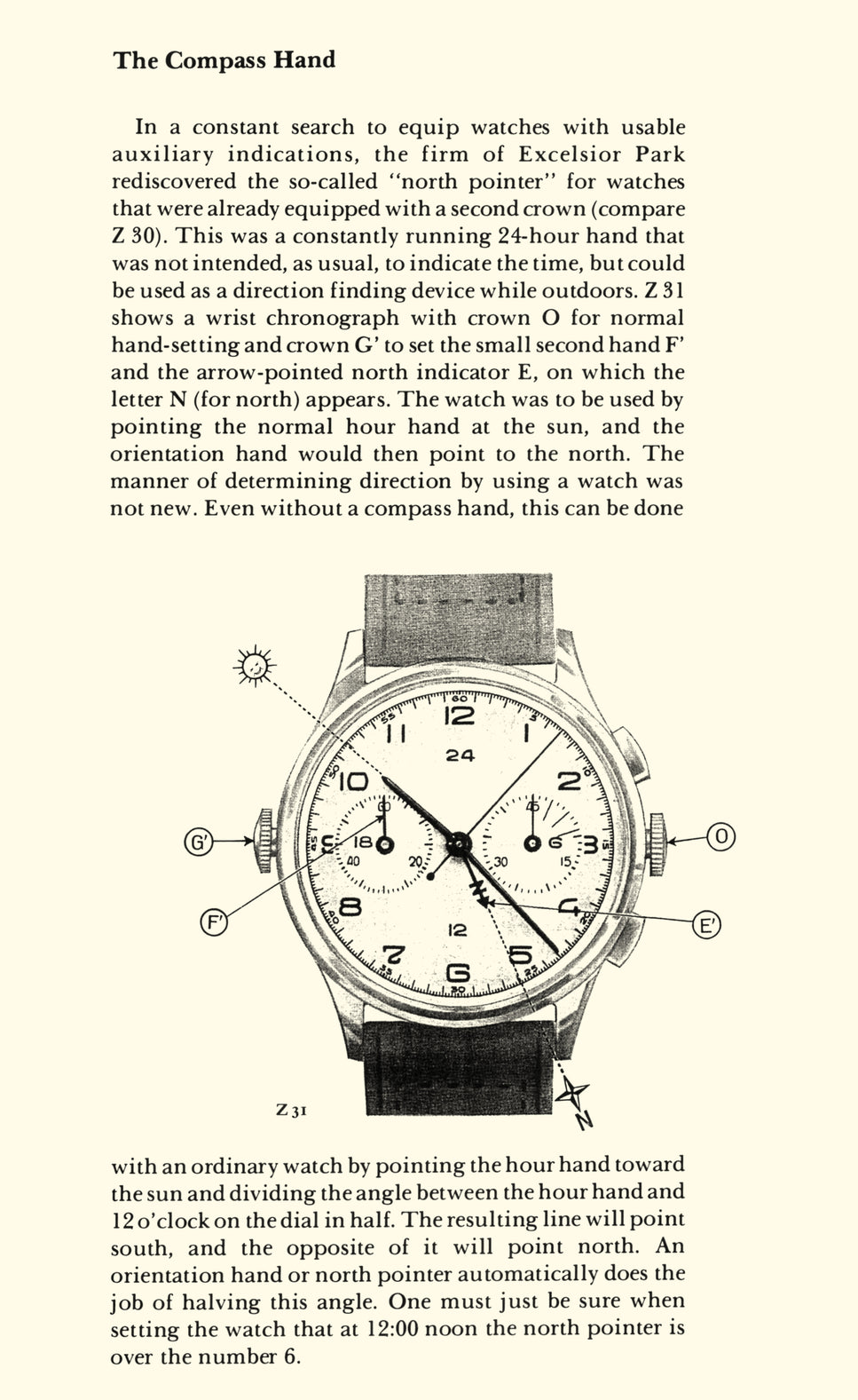
Excelsior Park will launch one surprising chronograph in 1945, one that is based on caliber 4 but with an orientation hand. This chronograph showed a double push-piece for another piece of hand with a shape of an arrow that carries a 24-hour turn on the dial. This device, whose patent was filed by the manufacturer in 1943, allowed a setting per hour “at the second’’, such as the signal of a radiophonic signal.
When the movement was provided with a shock-proof system a few years later, it authorized Excelsior Park to recommend this watch to the military parachutists. This chronograph was also marketed by Gallet and Zenith which called it, the Sextant.
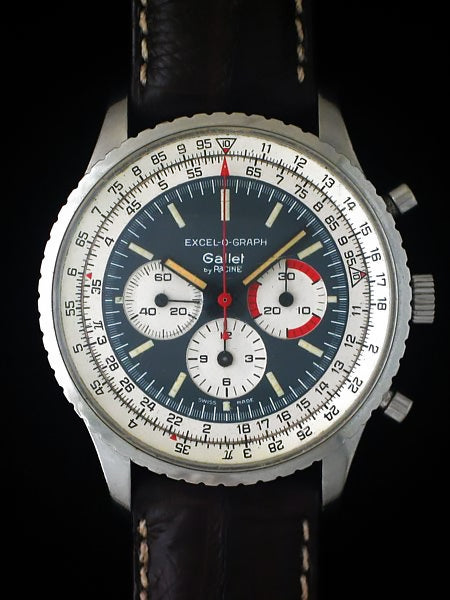
With such a prestigious past, it was only a matter of time someone will resuscitate Excelsior Parkback to its glory days. And that day is now.
Some slide descriptionExcelsior Park continued the manufacture of chronographs and stop-watches until the years 1970, always at its head a descendant of the founders. It continued to introduce a range of some interesting models which include a Yachting model about 1964 with a moving backward minutes counter for the departure of the regattas, a diver model with a revolving bezel shortly after, and especially the Excel-O-Graph, chronograph provided with a bezel rule slide. However, it did not resist and fell victim to the terrible quartz crisis during the 1970s. And around 1983 to 1984, the company nally succumbed and disappeared. A German watch tool supplier, the Fume company, tried to resuscitate the brand and acquired the naming rights in 1986. They made a small series of chronographs bearing the Excelsior Park name.
In particular is the Monte Carlo model equipped with the rare calibre Valjoux 7740, a manual version of the chronomatic, an automatic chronograph movement developed by Buren and Dubois-Dépraz and launched in 1969 by Hamilton, Heuer and Breitling. Unfortunately, it did not last long and quickly faded away again.

